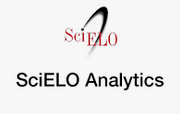Publish or perish: be a co-author?
Publica o perecerás: ¿ser coautor?
Silvia Del Rosario Huaillani-Chavez1*
1National Institute of Child Health San Borja
*Author for correspondence. Email: akizul@gmail.com
ABSTRACT
Today, one issue that concerns is the indiscriminate inclusion of co-authors in a publication, which sometimes does not contribute substantially to the manuscript. Until a few years ago, the publication of articles was motivated mainly by the desire to communicate the scientific contributions that contribute to the improvement of society; now this has changed a little due to the pressures and demands of publishing a minimum of writings either to stay as a teacher, receive funds or other factors. Therefore, the present research paper invites the authors that when they decide to include co-authors in their texts, reflect taking into consideration the postulates analyzed here, in order to make the decision based on criteria that support their position.
MeSH: ethics; periodicals as topic; education, medical.
RESUMEN
Un tema que preocupa hoy es la indiscriminada inclusión de coautores en una publicación los cuales a veces no contribuyen sustancialmente con el manuscrito. Hasta hace unos años la publicación de artículos era motivada fundamentalmente por el afán de comunicar los aportes científicos que contribuyeran al mejoramiento de la sociedad; actualmente esto ha cambiado un poco debido a las presiones y exigencias de publicar un mínimo de escritos ya sea para mantenerse como docente, recibir fondos u otros factores. Por lo expuesto, la presente comunicación invita a los autores a que cuando decidan incluir coautores en sus textos, reflexionen tomando en consideración los postulados que aquí se analizan, a fin de que tomen la decisión basados en criterios que respalden su postura.
DeSC: ética; publicaciones periódicas como asunto; educación médica.
Submitted: 25/07/2018
Accepted: 28/02/2019
In society there are innumerable health situations that need answers based on scientific evidence, and they are subject to publication in formal media such as Journals. These are a means that, in addition to spreading knowledge, provide the professional with visibility, positioning and a certain authority over the issue stated by the academic community.(1) In this sense, today health professionals have the need, in some way of being the author of some manuscript to publish.
Whether by the demands of the "publish or perish",(2) some authors assume inappropriate scientific behavior such as fraud due to social or institutional pressures: in order for someone to achieve a publication include as co-authors a personality, authority or financier of the circles, without those having collaborated in the quality of the published evidence.(3,4) Therefore, it is questioned about which considerations should be taken into account to authorize co-authors in a scientific article.
This is not a simple subject because many times the author is exposed to the fact that the manuscript is not published if its irregularity is demonstrated.(5) Maybe if since the beginning it was aware that being co-author is not only to be included in the list of credits, but that the content of the work would also be its responsibility in terms of the scientific quality and ethical transparency of the study;(6) then its decision would be different. Therefore, the co-author is committed to scientific quality and must contribute significantly to the idea, design, collection and analysis of data; write the manuscript and/or approve its final version; on the other hand, it must guarantee ethical transparency in terms of the evidence declared of an adequate order by the authors' contribution, specify conflicts of interest and avoid frauds such as "authorship by coercion", "grafted author", "surprise author", "ghostwriter", among other questions of reprehensible scientific behavior.(7)
In this sense, a co-author is characterized above all by the comprehensive commitment that the work meets the requirements of excellence in terms of the content of the research and its quality processes in the preparation phase of the article. This does not exempt that it can be a personality, a postgraduate professor or academic authority as long as it complies with the aforementioned requirements. Likewise, it is essential to have instruments that allow demonstrating the absolute impartiality of the order of contributions, either with the Petroianu,(8) scale of the score based on the contribution of each member in which a minimum of seven points is required to be considered co-author, as the Figure 1 shows; or the activity criteria based on phases by Acosta,(9) where the contribution of the co-author must exceed 15 %, according to their participation in the indicators expressed in the Table 1.
Fig. 1. Criteria of authorship by participation, according to the Petroianu scale.
Table 1. Criteria of authorship by phases, according to Acosta.
Source: Acosta.
Finally, there is no fear in deciding whether it is better to place the applicant co-author in the acknowledgments section, since if they consider the aforementioned instruments, the authors will have sufficient support to avoid pressures or academic conflicts; the important and main thing is that as author it guarantees a publication of scientific quality and ethical transparency, and this starts from the accreditation of who it considers as co-authors.(10)
REFERENCIAS BIBLIOGRÁFICAS
1. Murillo FJ, Martínez-Garrido C, Belavi G. Sugerencias para Escribir un Buen Artículo Científico en Educación. Revista Iberoamericana sobre Calidad, Eficacia y Cambio en Educación. 2017;15(3):1-30.
2. Ilarraza-Lomelí H, García-Saldivia M. En un documento científico: ¿quién debe ser el primer autor? Arch Cardiol Mex. 2015;85(2):93-5.
3. Vera Carrasco O. Ética de las publicaciones científicas en las revistas médicas. Revista Médica La Paz. 2011;17(2):46-52.
4. Vázquez Moctezuma SE. Ética en la publicación de revistas académicas: percepción de los editores en ciencias sociales. Innovación Educativa (México, DF). 2016;16(72):53-74.
5. Rossato N. Aspectos éticos de las publicaciones. Archivos Argentinos de Pediatría. 2014;112(6):490-1.
6. Flores Herrera D. Créditos de Autoría en Investigación Científica. Revista Científica Ciencia Médica. 2013;16(1):3-4.
7. Chavarría Bolaños D. Autores y autorías: Controversia más allá de la investigación. Odovtos International Journal of Dental Sciences. 2017;19(3):9.
8. Petroianu A. Critérios para Autoria de um Trabalho Científico. J bras Doenças Sex Transm. 2012;24(2):99-103.
9. González M, Mattar S. ¿Quién puede ser autor de un artículo científico? ¿Yo, tú, el, ellos, nosotros? ¿Quién sabe? Revista MVZ Córdoba. 2011;16(1):2271-3.
10. Díaz GJ. Autoría y reconocimiento en artículos científicos. Revista de la Facultad de Medicina Veterinaria y de Zootecnia. 2015;62(1):9-10.
Declaration of interests
The authors declare no conflict of interest
This article has been published under the license of Creative Commons
Copyright (c) 2019 EDUMECENTRO

Esta obra está bajo una licencia de Creative Commons Reconocimiento-NoComercial-CompartirIgual 4.0 Internacional.










